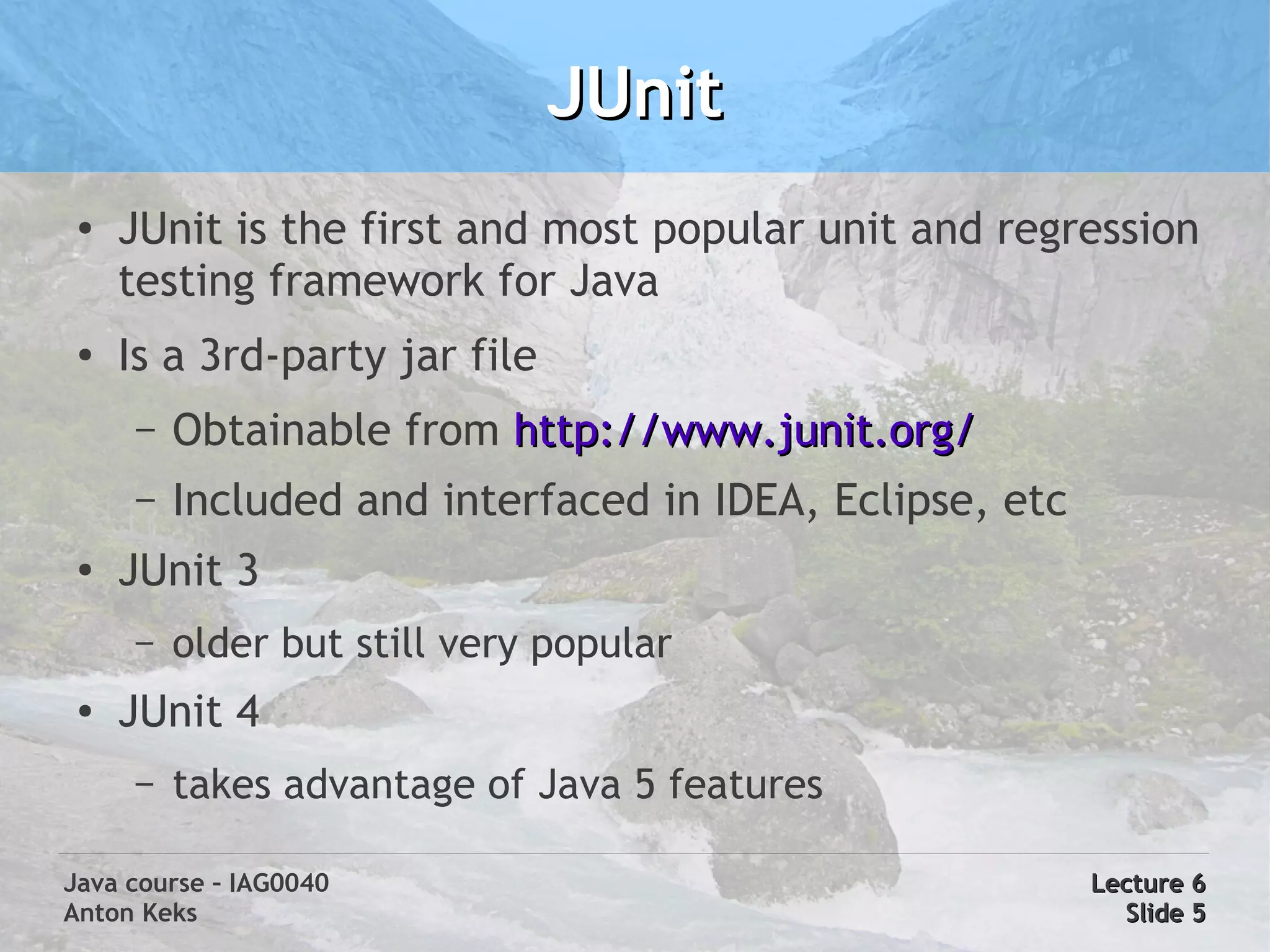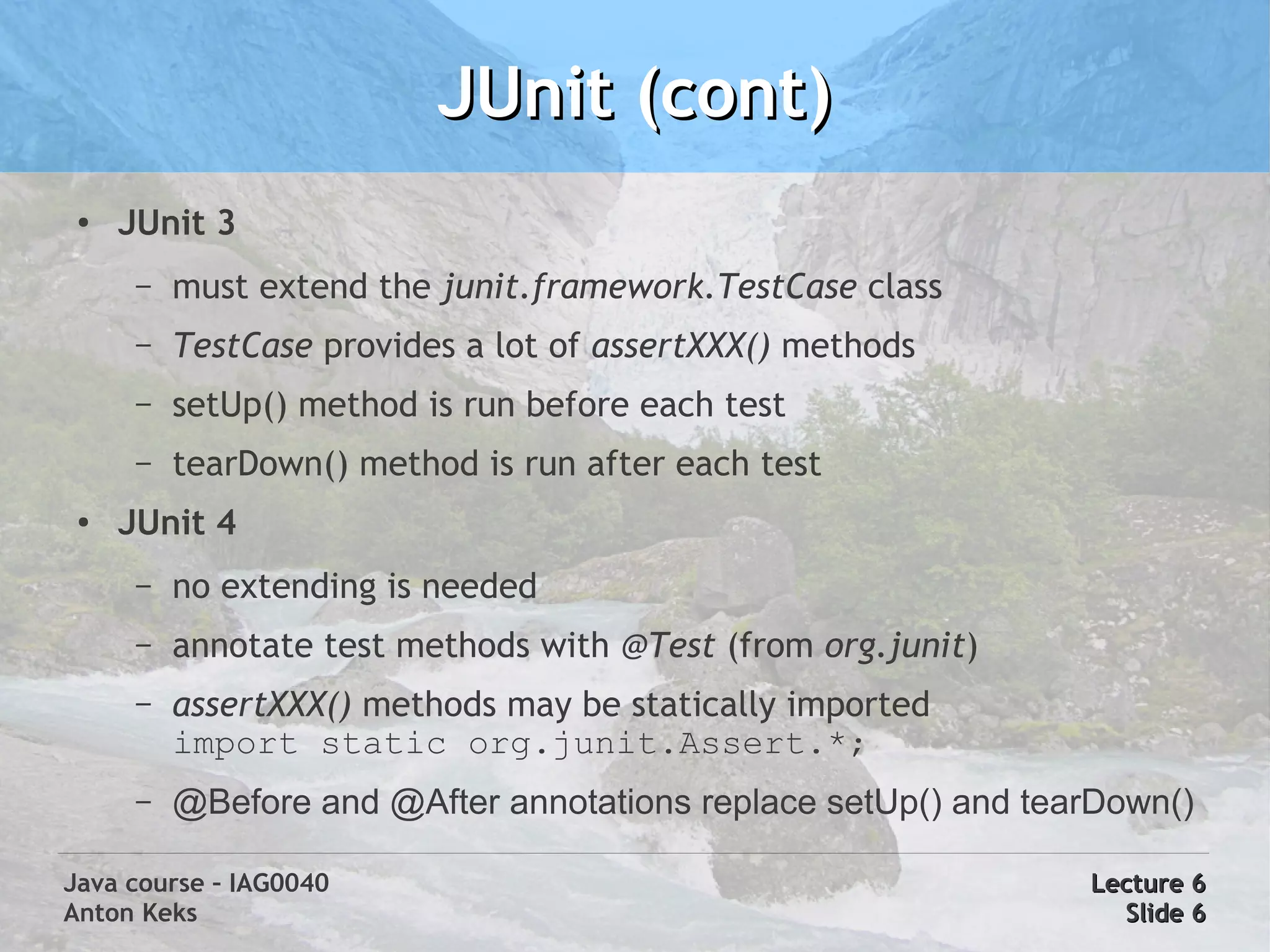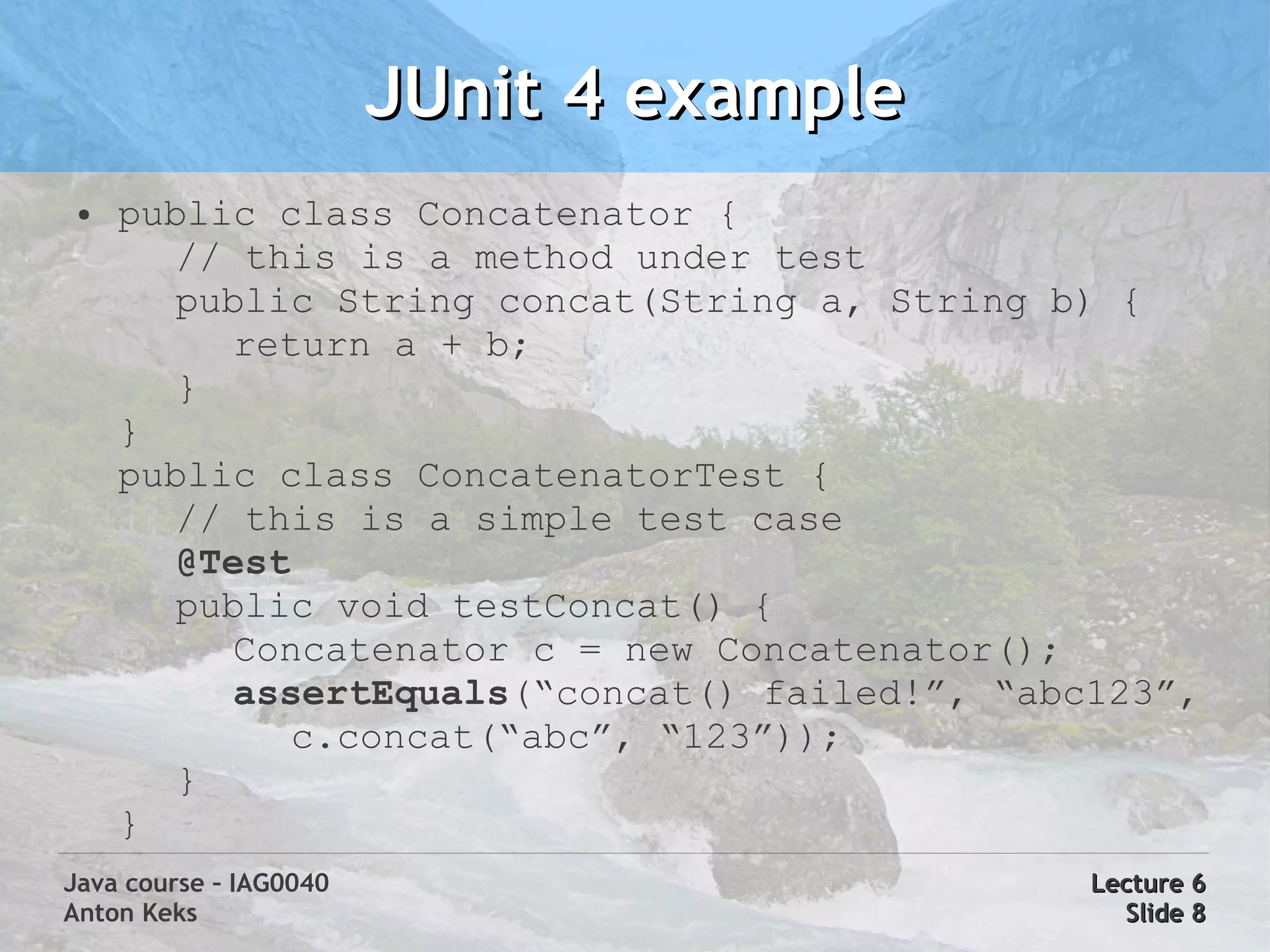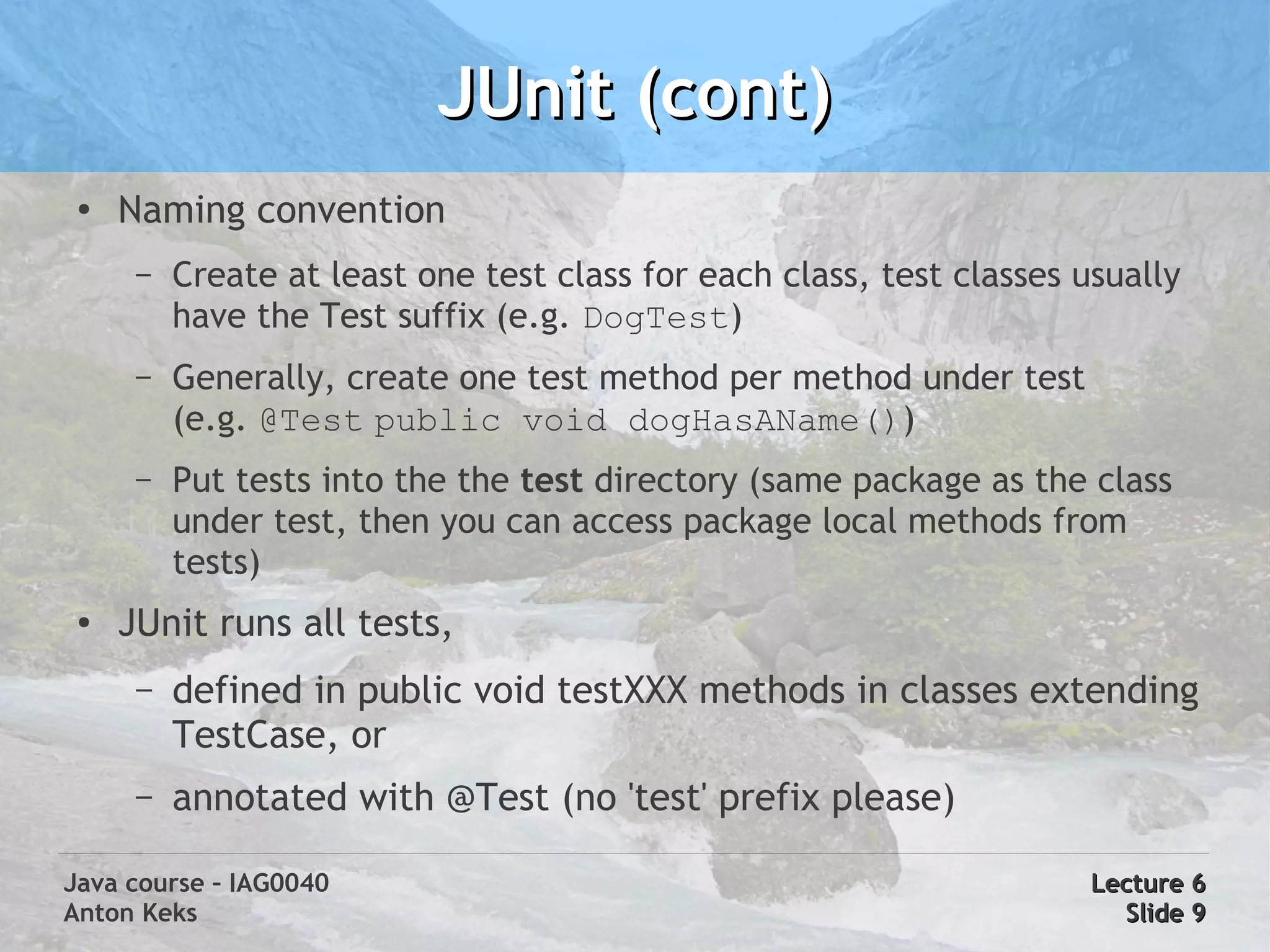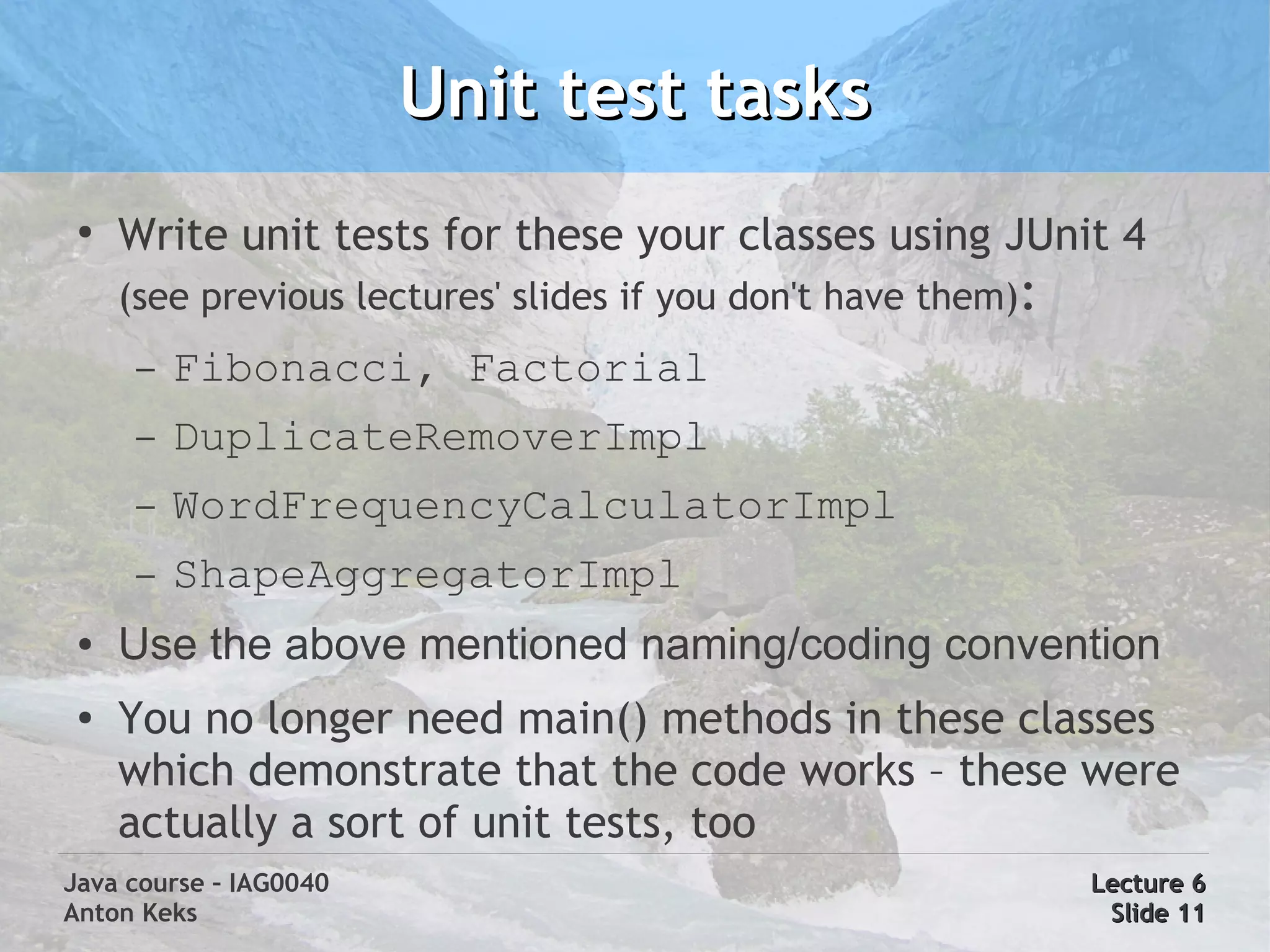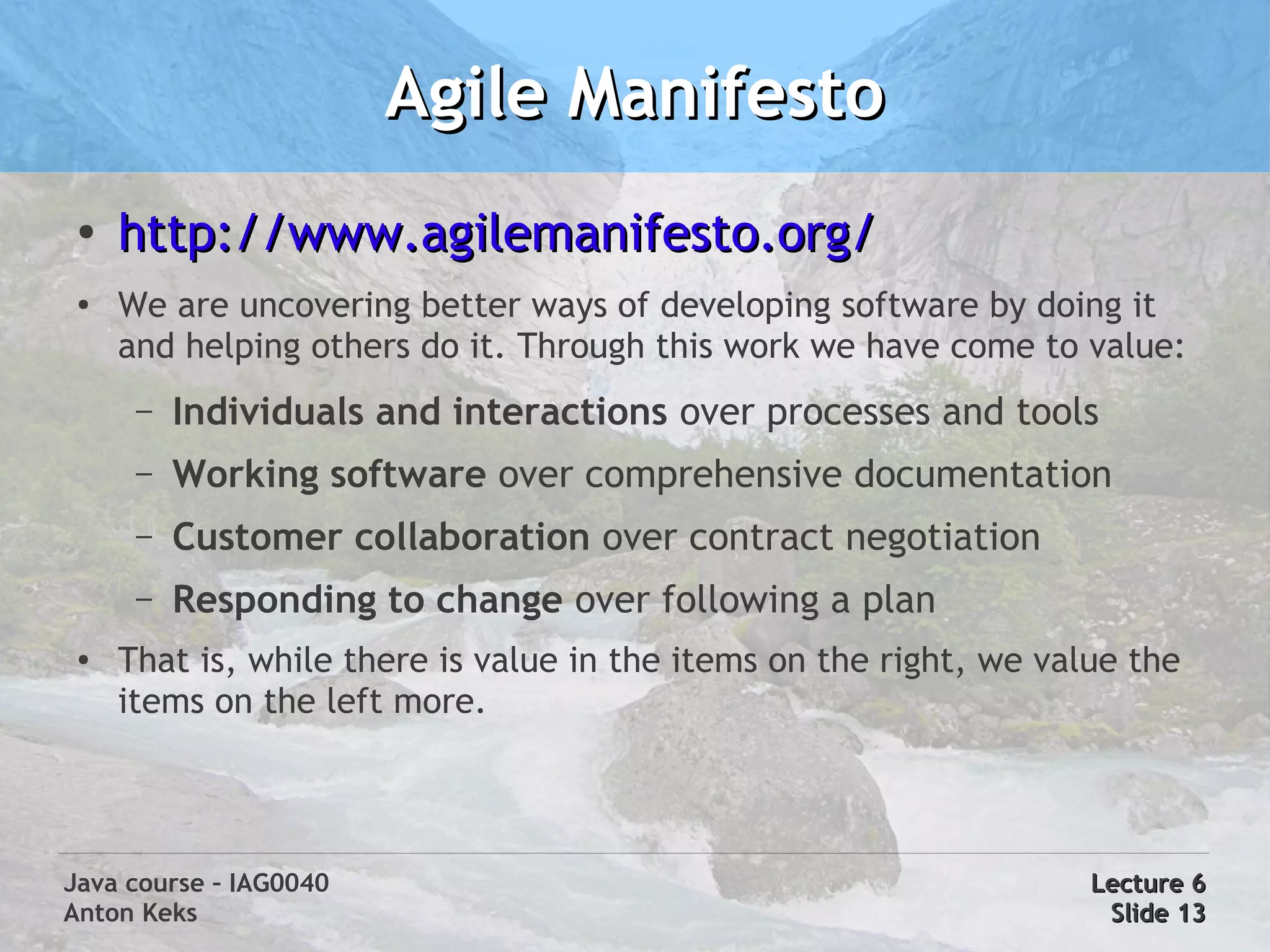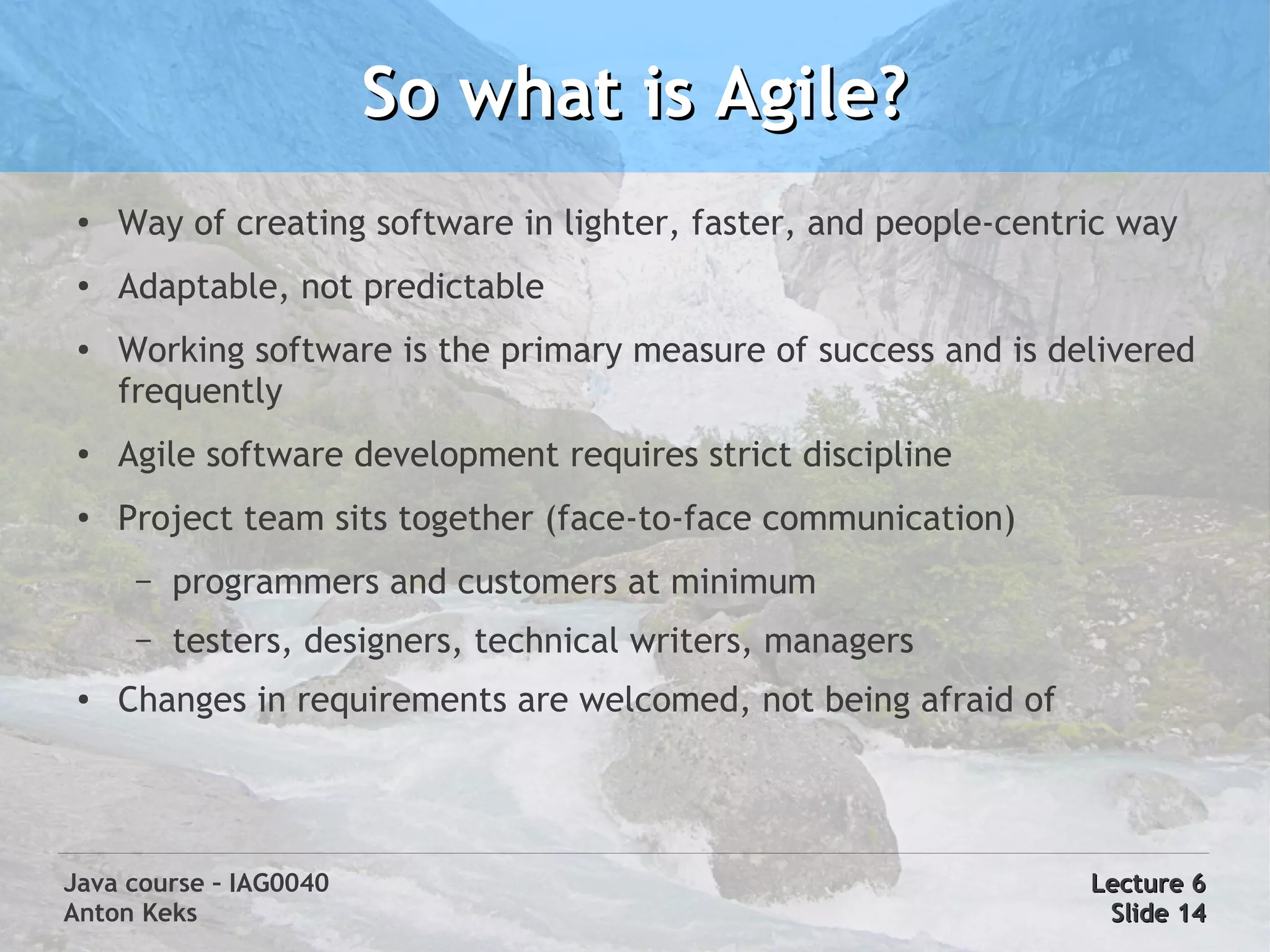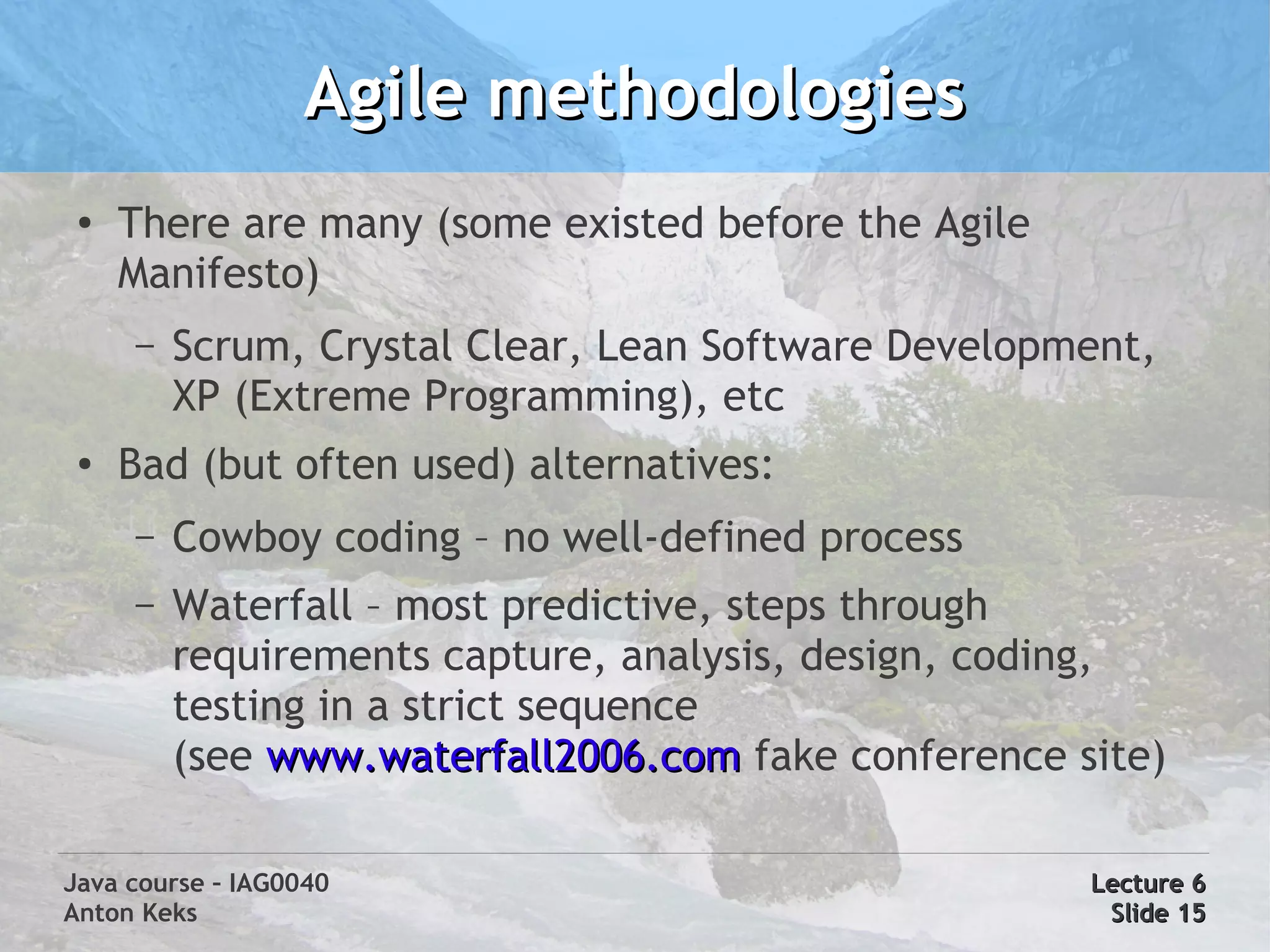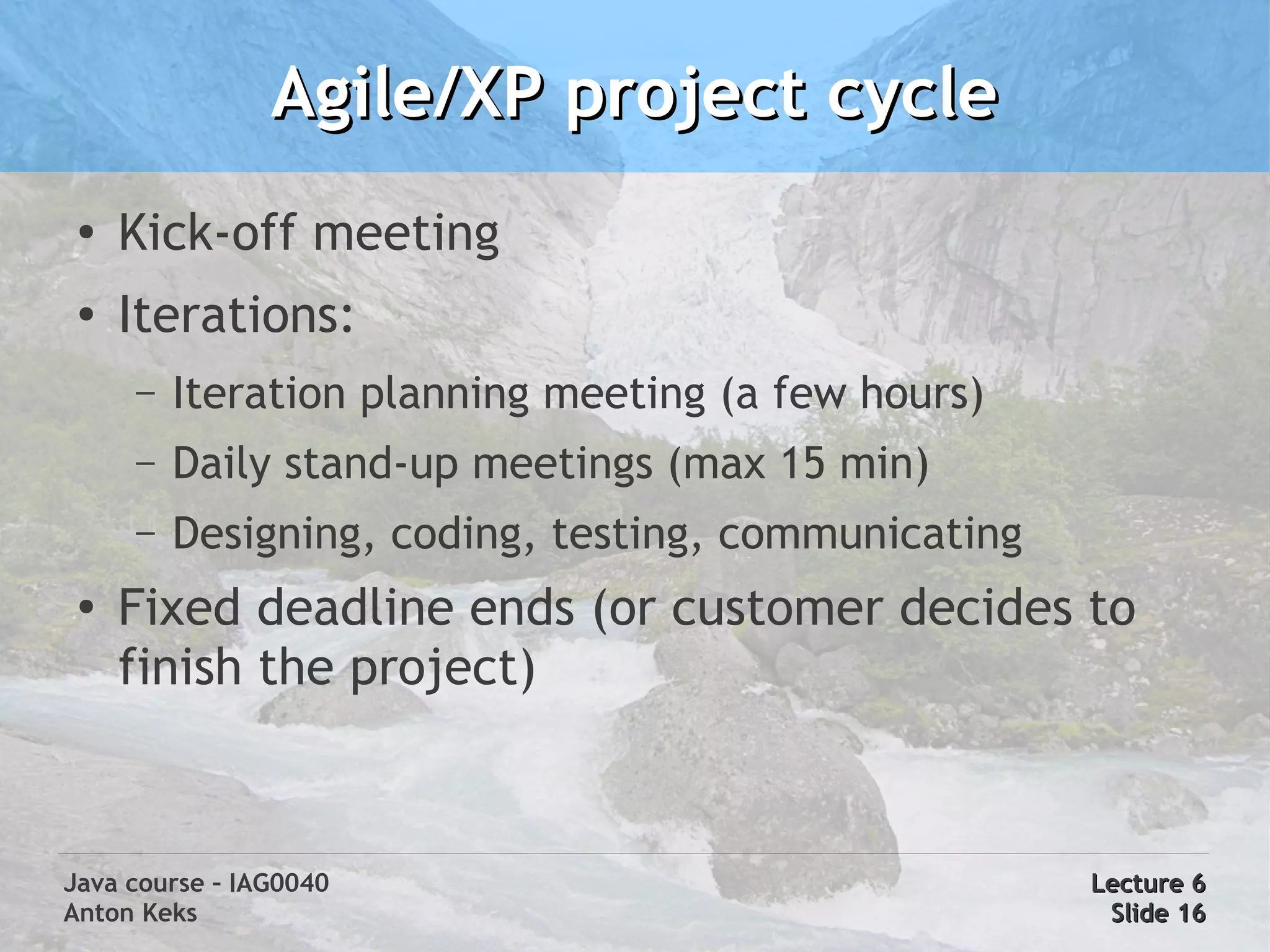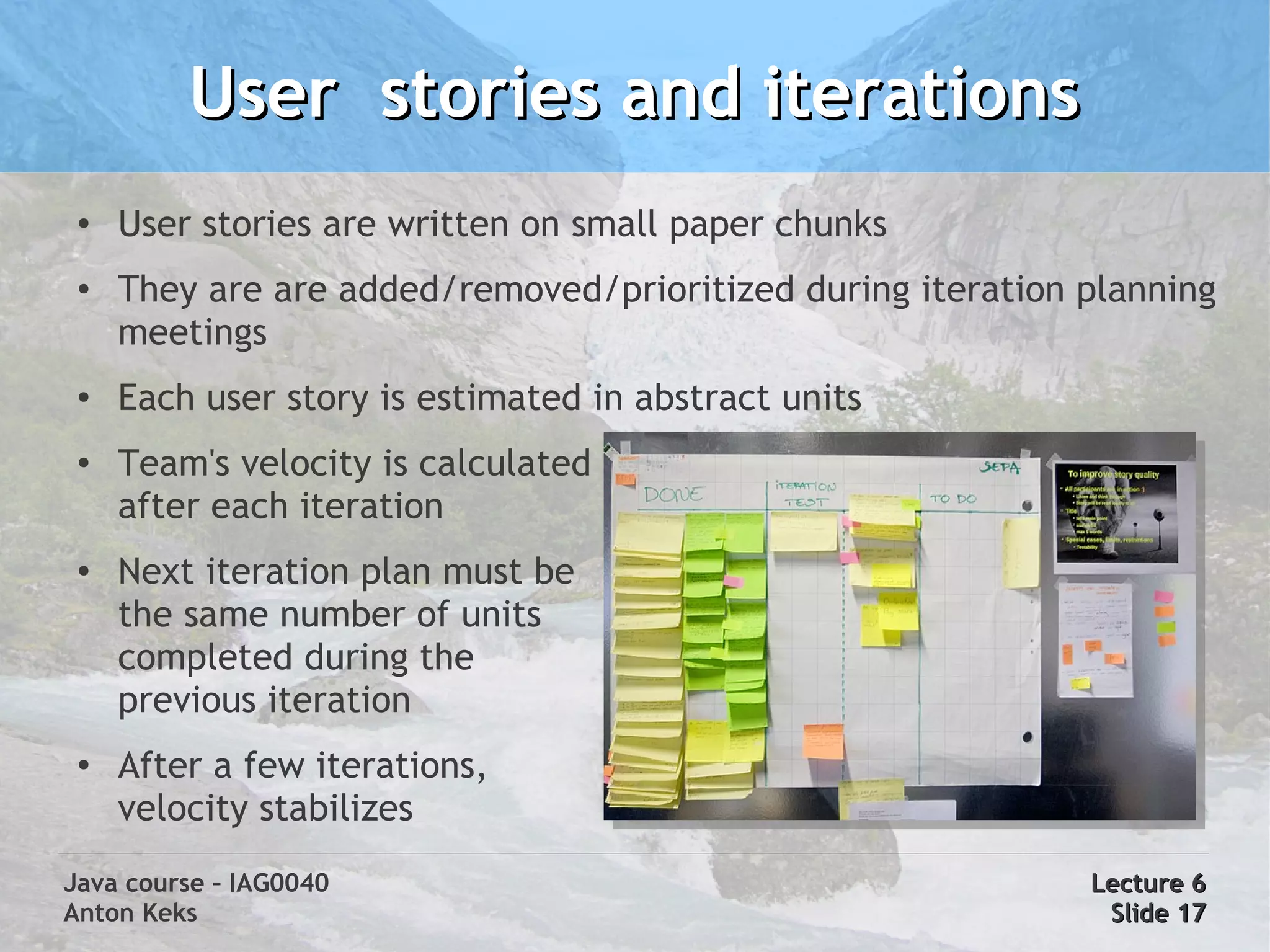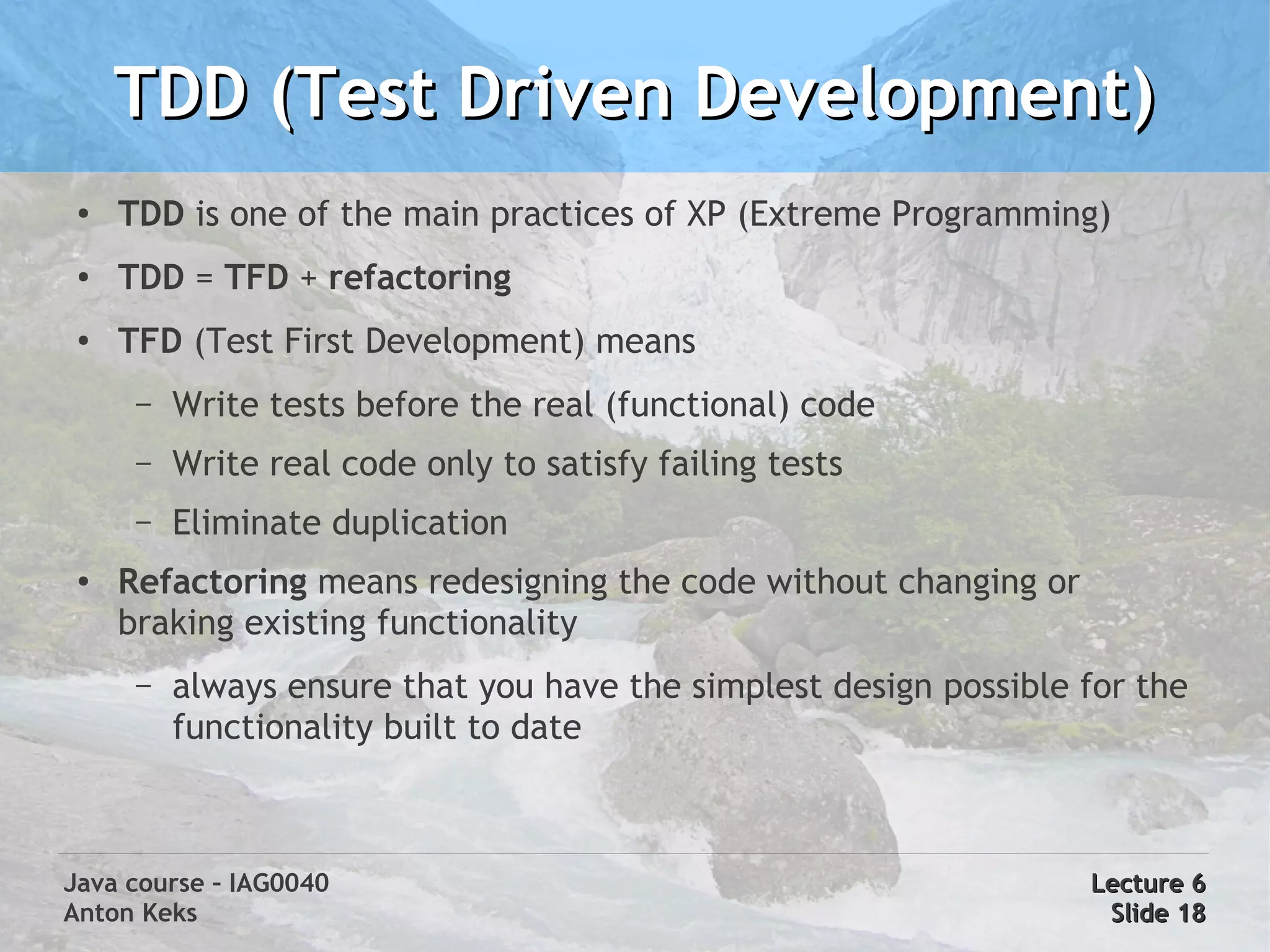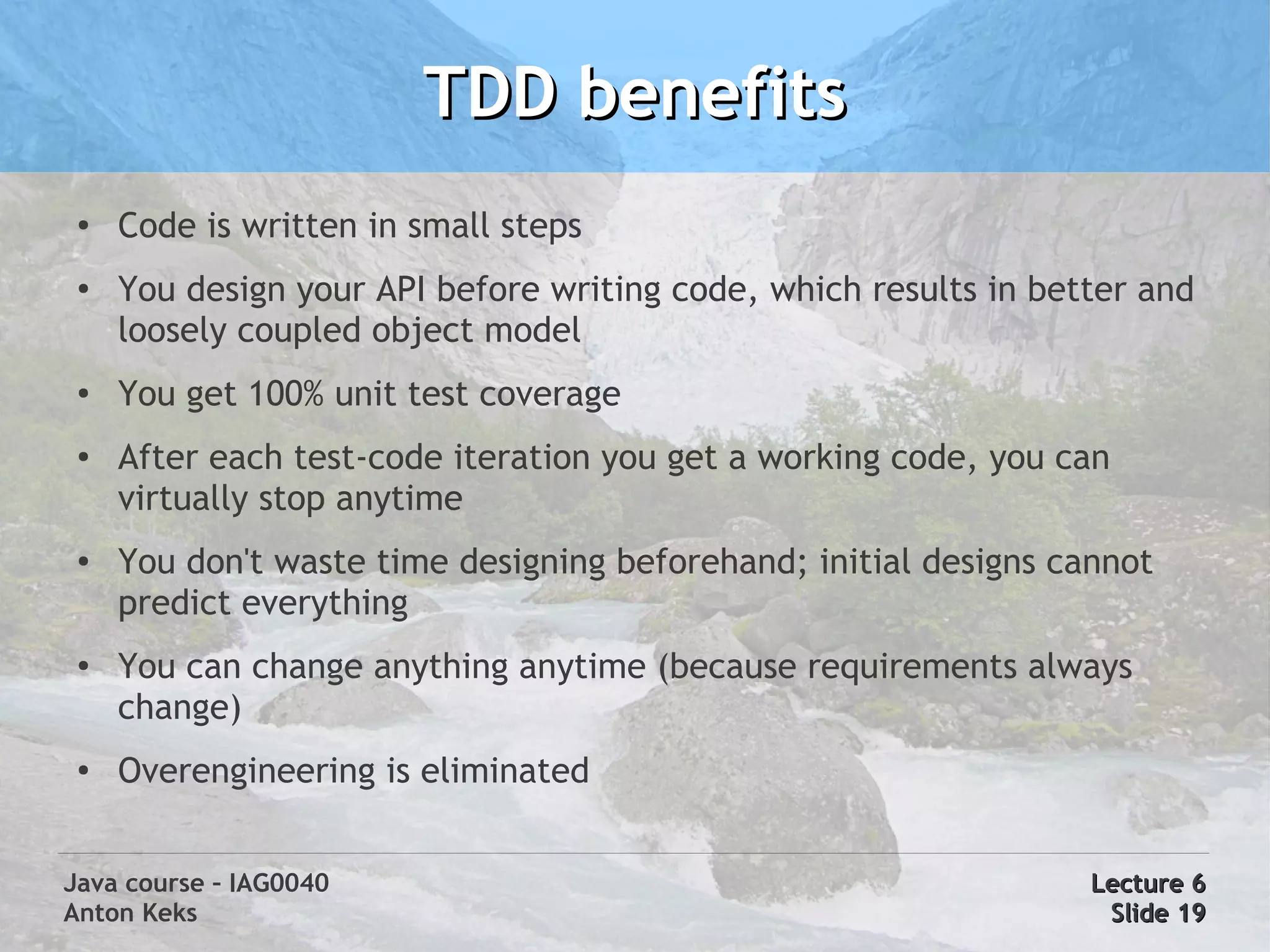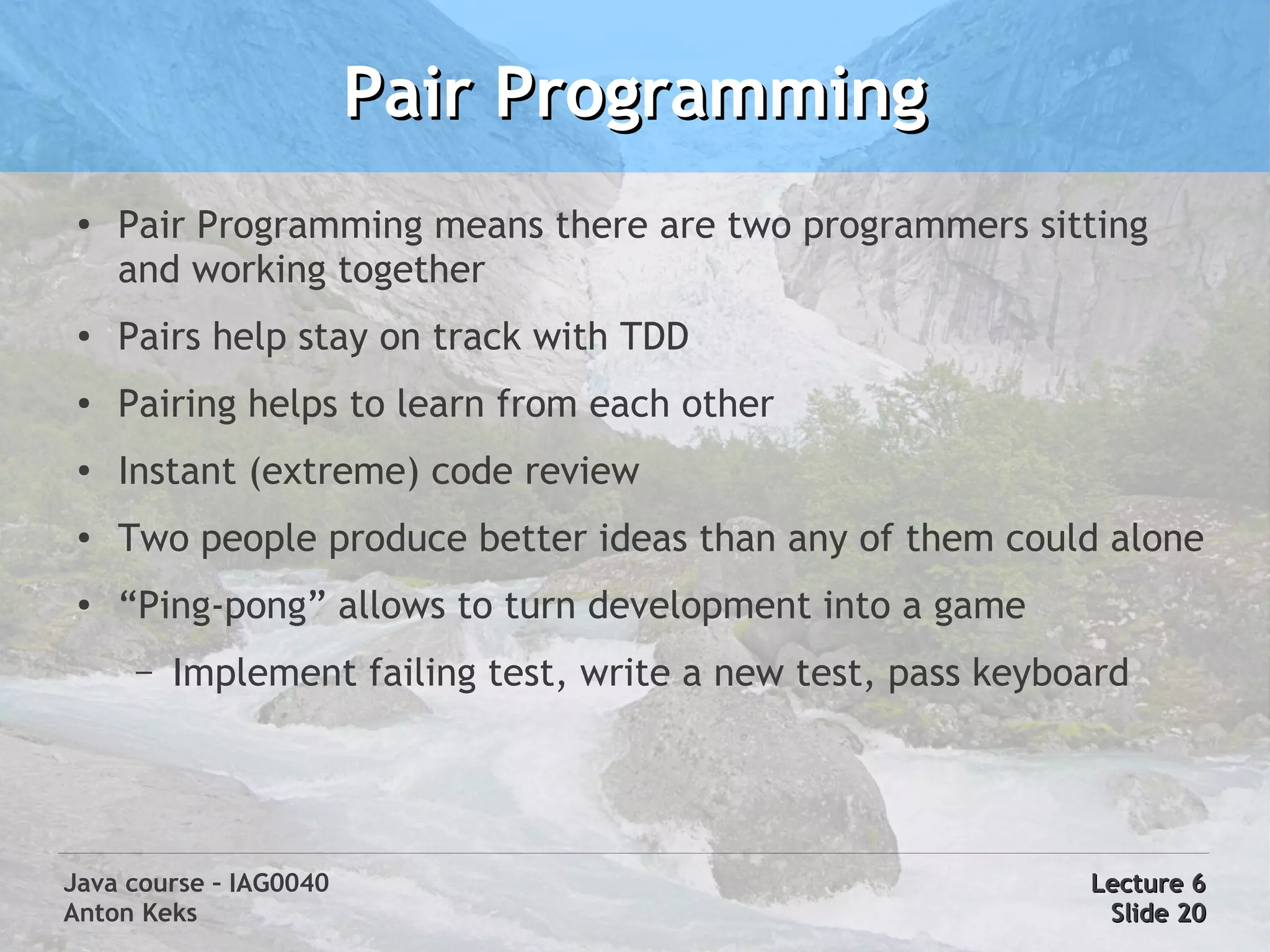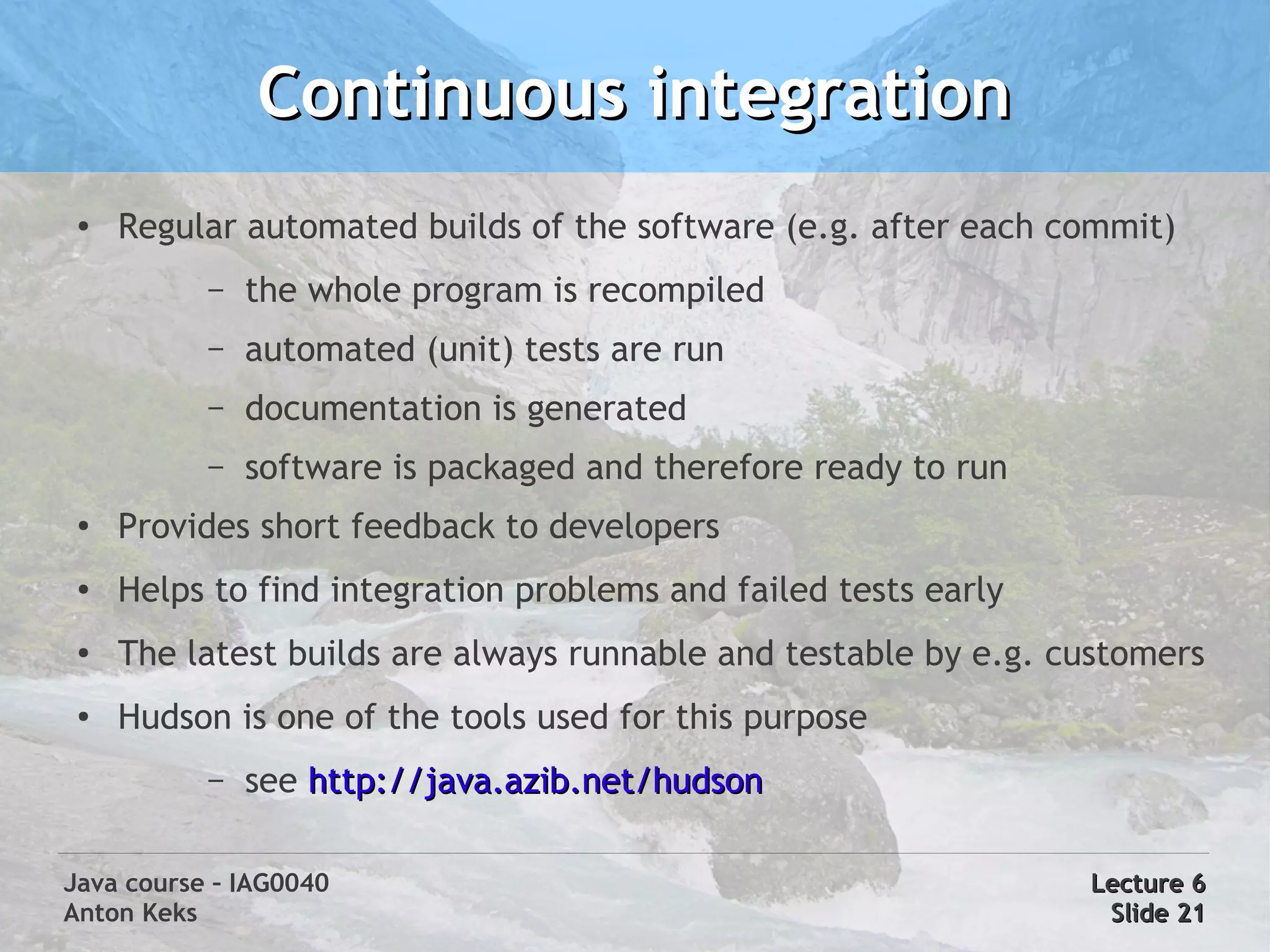The document outlines the importance and benefits of unit testing in Java, explaining its role in ensuring code quality through regression testing and facilitating safer code changes. It introduces JUnit as a popular framework for writing and running unit tests, detailing its features and differences between versions 3 and 4. The document also discusses Agile software development methodologies, including test-driven development (TDD) and pair programming, emphasizing their roles in improving software quality and team collaboration.
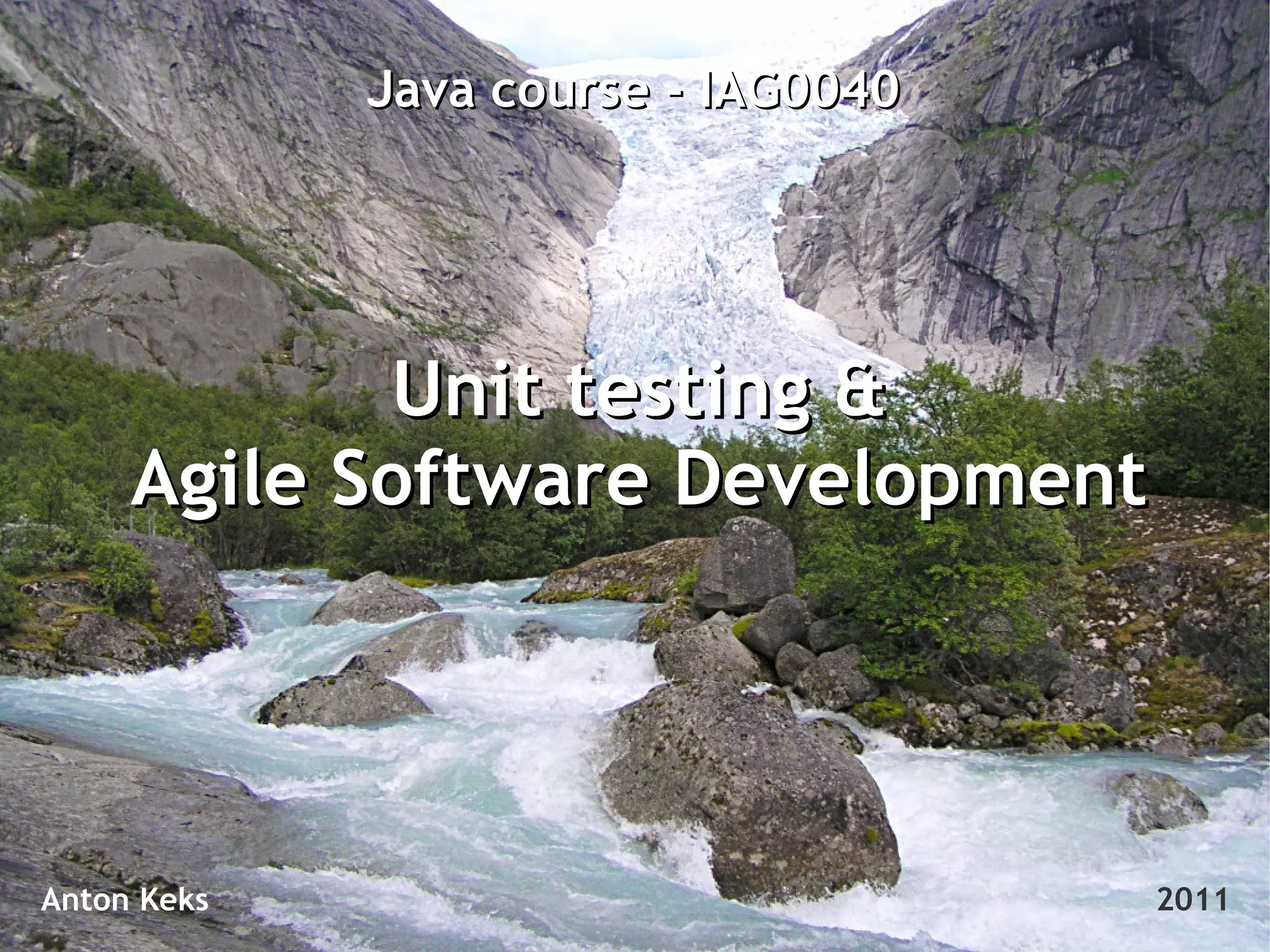
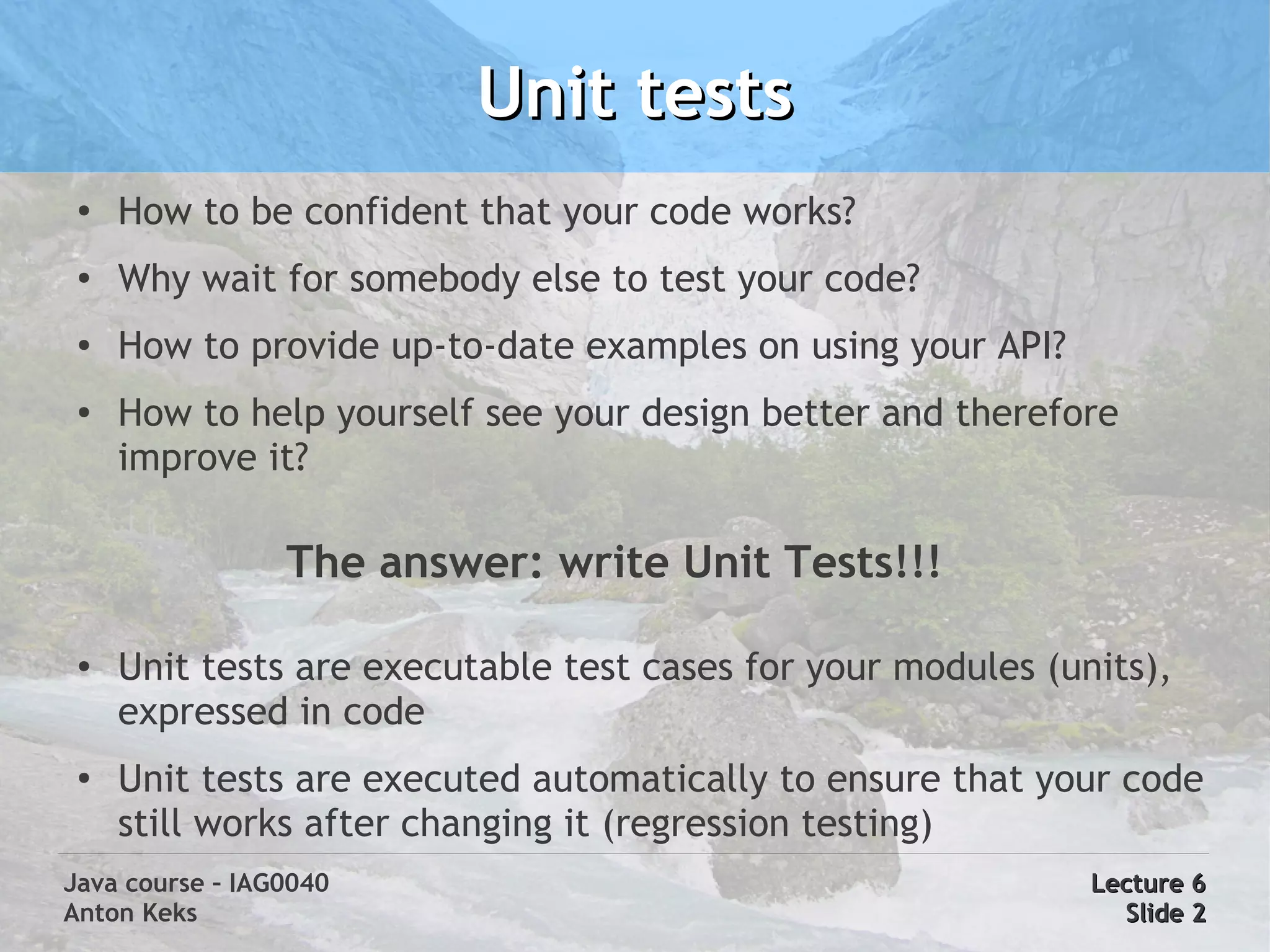
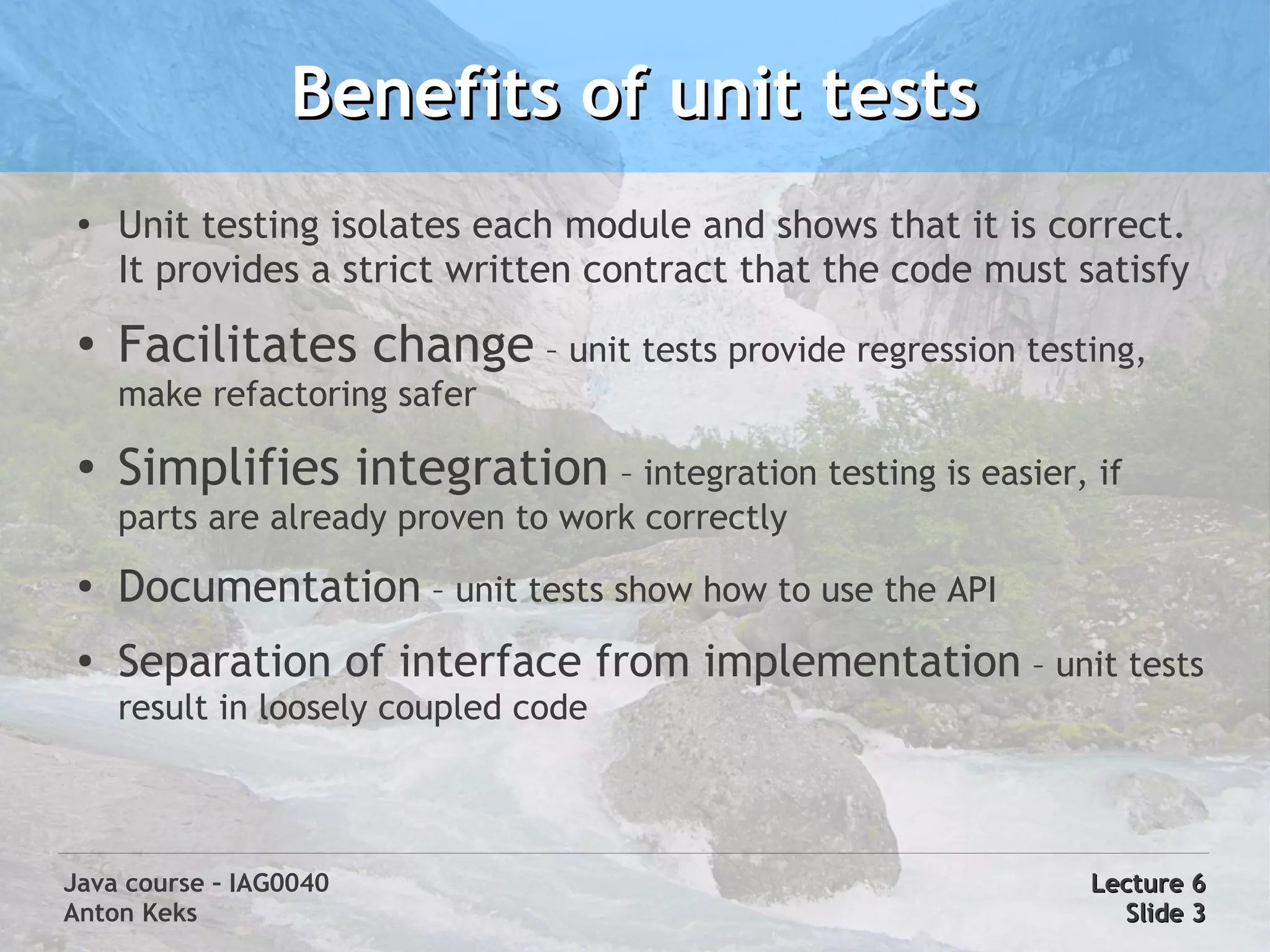
![A simple example
● public class Concatenator {
// this is a method under test
public String concat(String a, String b) {
return a + b;
}
// this is a simple test case
public static void main(String[] args) {
Concatenator c = new Concatenator();
assert “abc123”.equals(
c.concat(“abc”, “123”))
: “concat() failed!”;
}
}
Java course – IAG0040 Lecture 6
Anton Keks Slide 4](https://image.slidesharecdn.com/6-agile-120111160228-phpapp02/75/Java-Course-6-Introduction-to-Agile-4-2048.jpg)
